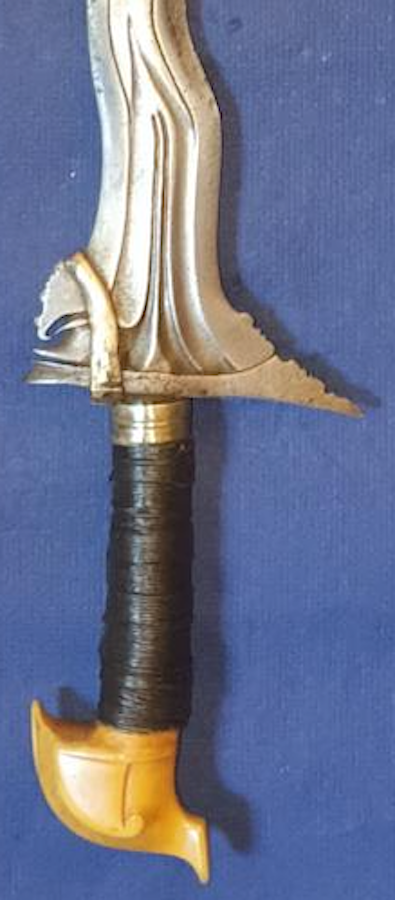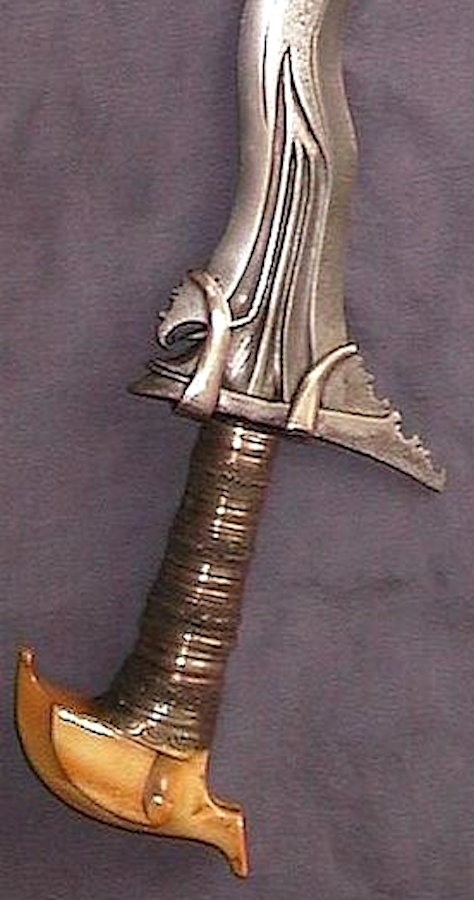Thanks again to Rick and Sajen for adding the dimensions of their swords to the posts above. Rick's sword is a tad bigger, with a blade that is a cm longer (45.7 vs 44.7 cm) than Sajen's, and also longer overall (58.1 cm vs 56.5 cm). Nevertheless, these are significantly smaller than 19th C examples, such as most of those shown in the picture of the panoply above. On size alone, Rick's and Sajen's swords would be considered "archaic
kris." As already noted, these two swords resemble the example A-11 shown above.
Taking a closer look at the
ricikin on these two swords shows some interesting features, and perhaps some important differences.


Sajen's sword is on the left; Rick's sword is on the right
Apart from one sword having two
asang asang and the other only one, at first sight they look remarkably similar. Closer inspection shows some small differences.
- The "elephant trunk" area of Sajen's sword shows a gandik that is mostly vertical with a hint of convexity to the free edge; Rick's sword shows an oval space bounded by the sekar kacang and the gandik, caused by the gandik having a concave profile to its free edge. Sajen's configuration is closer to an old keris style, while Rick's example is reflected in many later Moro kris, especially those from Sulu.
- The line of separation between the ganja and blade on Sajen's sword tends to arc up (not exactly angled but definitely a major departure from horizontal); Rick's sword also departs from linear, but in a more angled manner. While Sajen's configuration is unusual, I don't think much can be made of differences in the line of separation between these two.
- The greneng on Sajen's sword appear more worn than on Rick's. While this might suggest that Sajen's example is older, I don't think we can make much of this finding. Oxidative losses depend so much on how the piece has been stored and kept oiled.
Both of these swords are excellent candidates for originating before 1800. They may or may not be as old as A-11, but they share a lot of the same important characteristics that reflect the origin of the
kris from the "Modern Javanese
Keris."